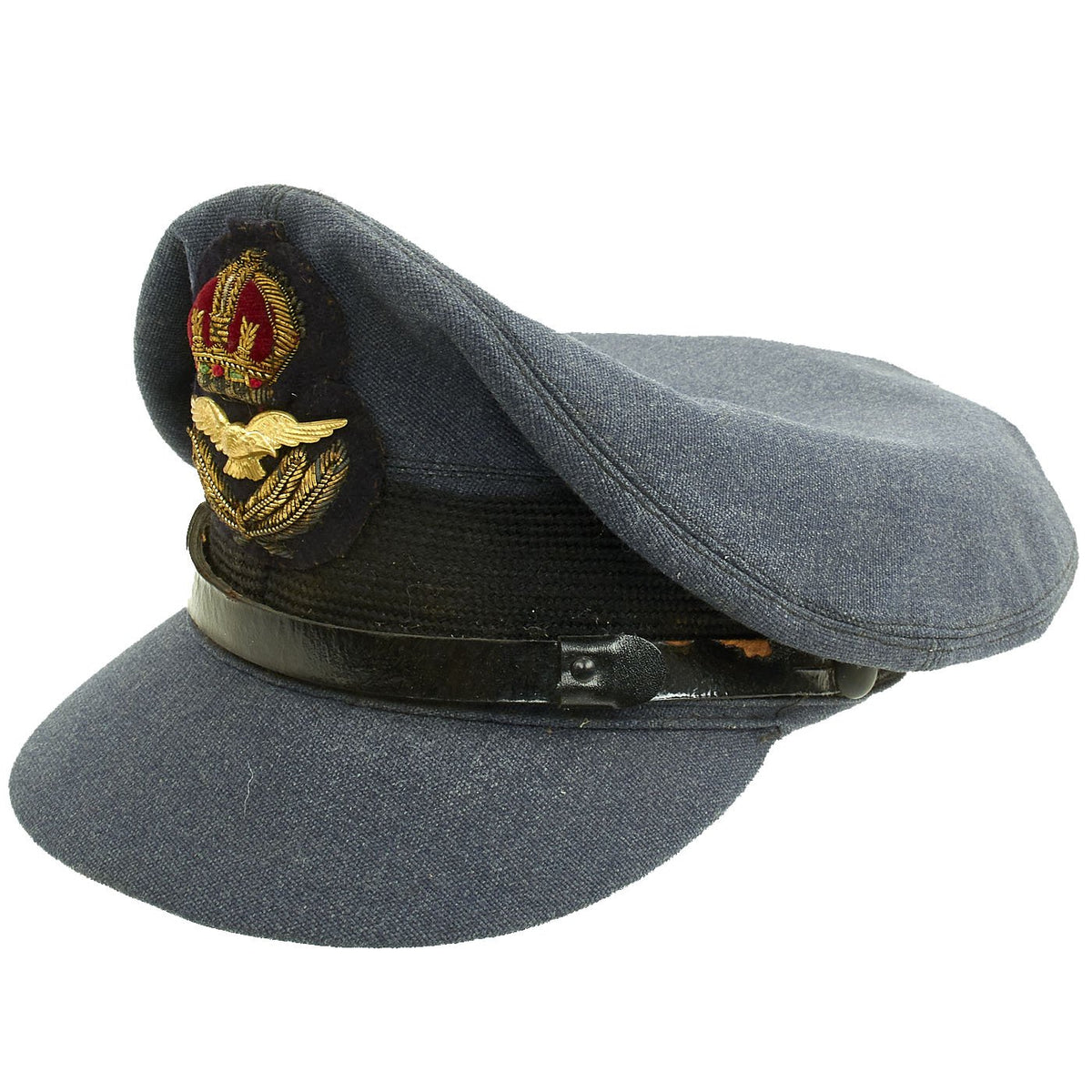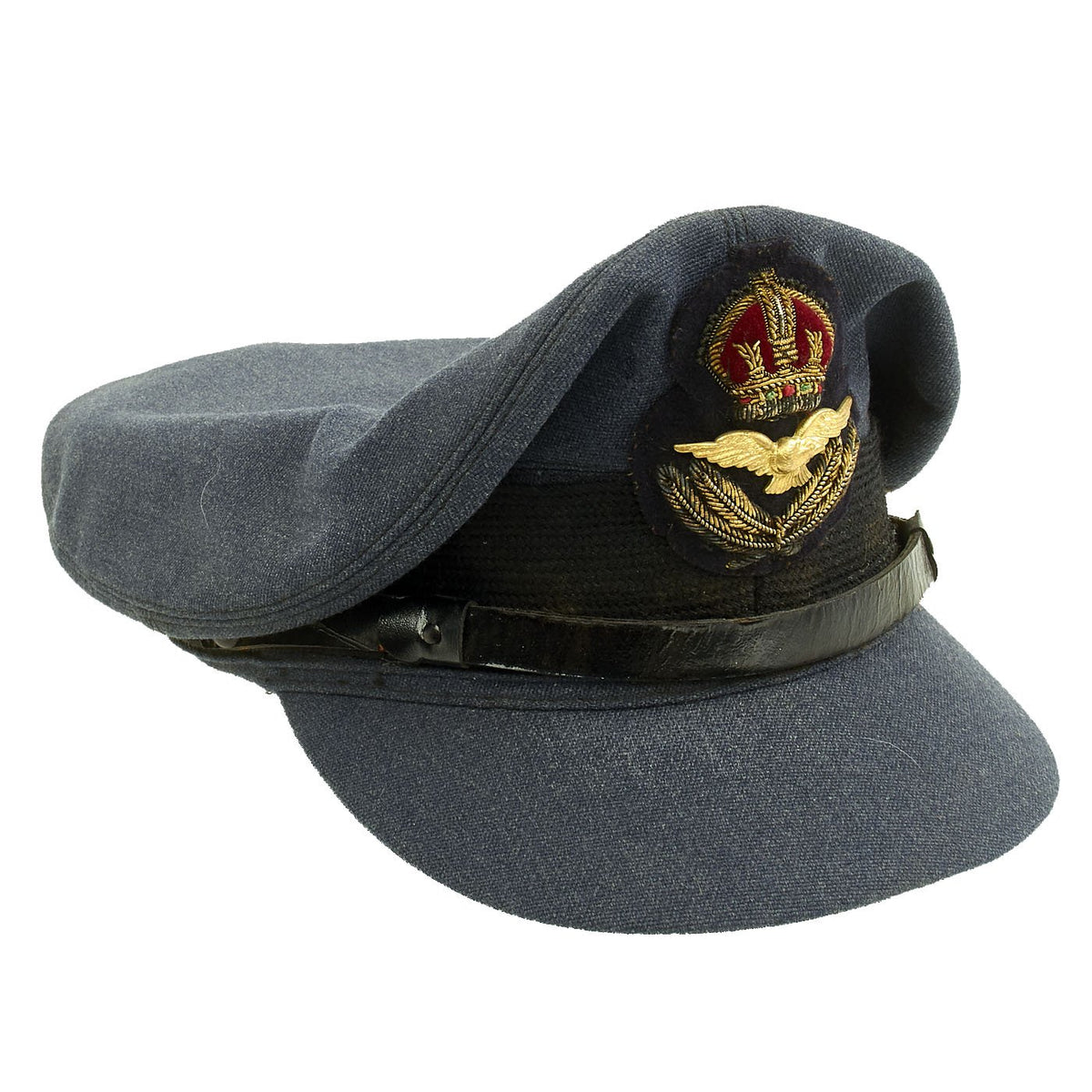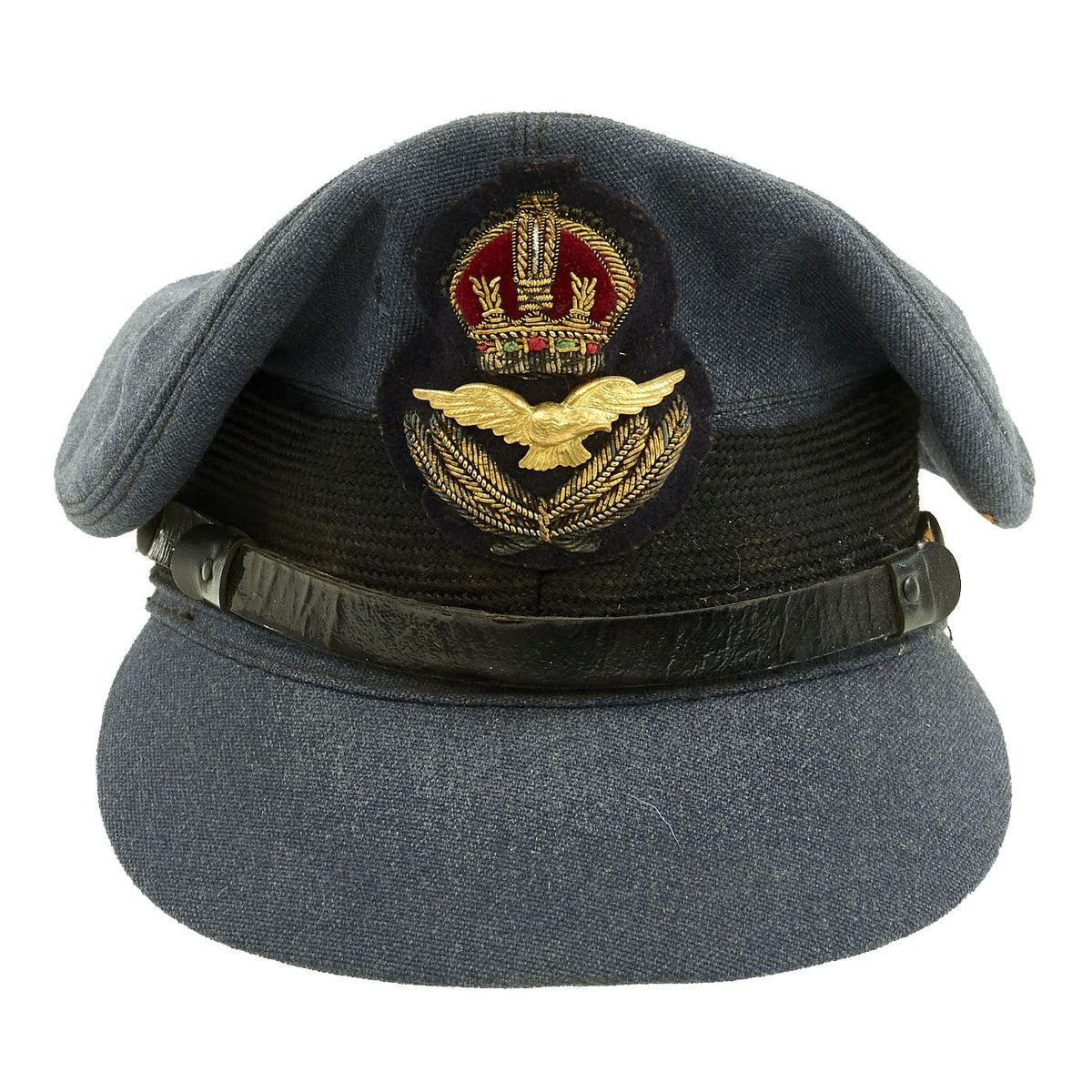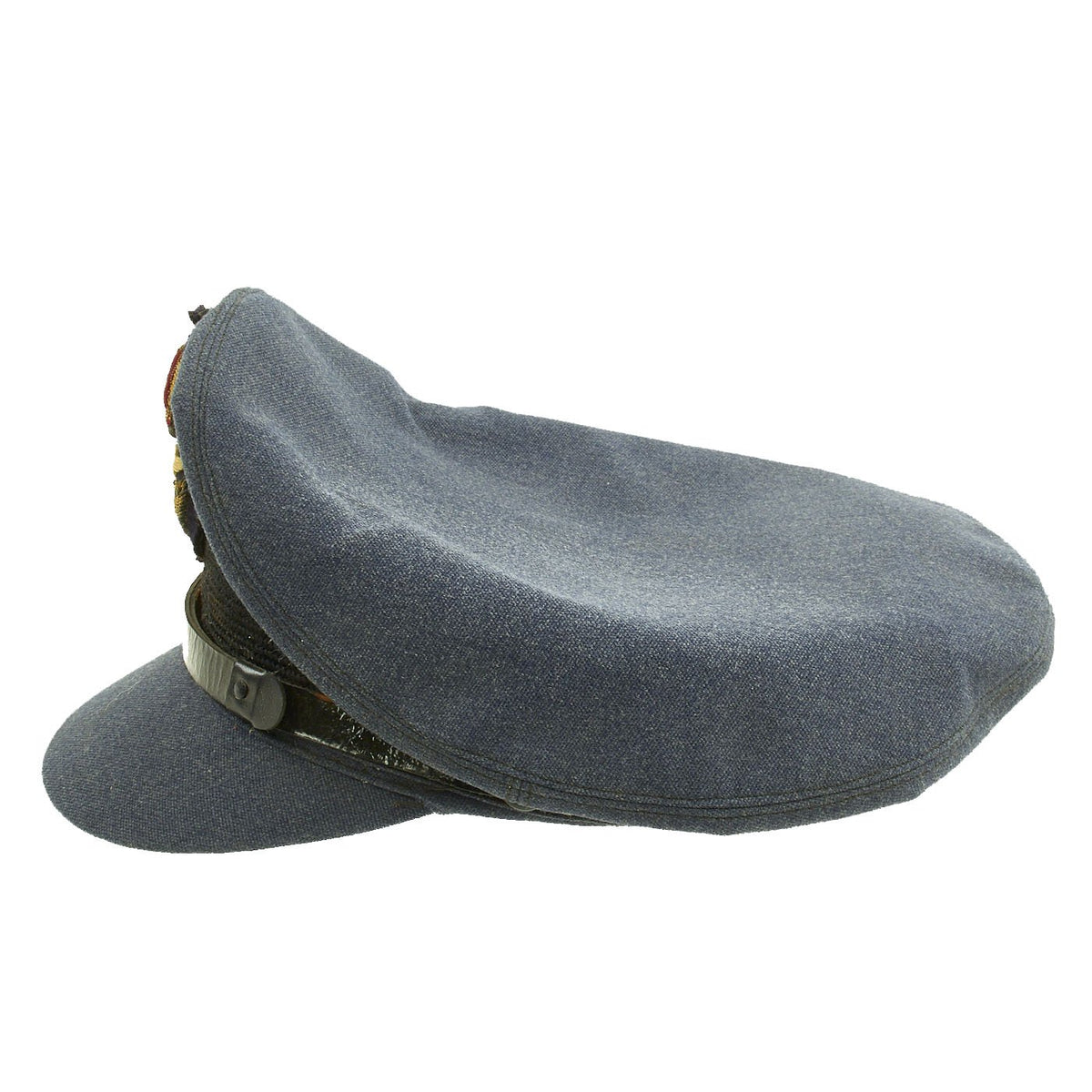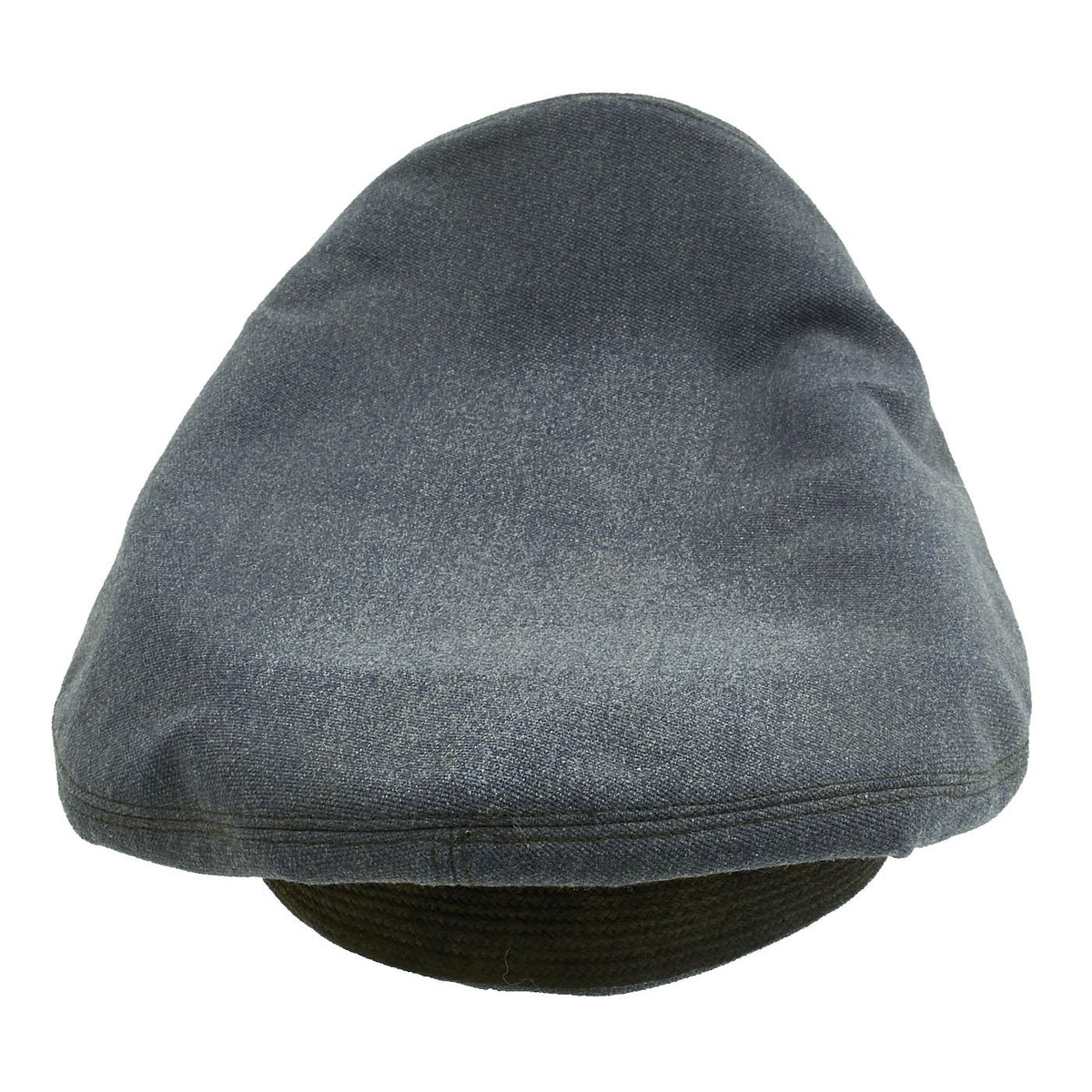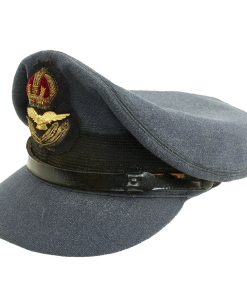Original British WWII Royal Canadian Air Force RCAF Officer Visor Cap by Muir Cap Co. – Size 6 7/8 Original Items
$ 325,00 $ 97,50
Original Item: Only One Available. This is a beautifully tailored RCAF officer’s peaked visor cap dating from WWII. Constructed of blue barathea wool with black mohair band and lovely padded bullion embroidered King’s Crown badge and laurels with gold wash metal eagle. The interior is in very good condition with a celluloid sweat guard lining intact to the crown and leather sweatband which is embossed with the makers name:
MUIR
CAP CO.
LIMITED
TORONTO
CONTRACTORS
TO THE
DOMINION GOVERNMENT
There is also a crown badge under the sweat guard reading MUIR CAP & REGALIA TORONTO CANADA. This was a well known maker and supplier to the RCAF. There is a small label to the back of the sweatband which is marked 6 7/8. It does not appear to have been worn much at all.
RCAF material from WWII is extremely difficult to find. Offered in overall excellent condition with a few minor nips here and there. Ready to display!
The Canadian Air Force (CAF) was established in 1920 as the successor to a short-lived two-squadron Canadian Air Force that was formed during the First World War in Europe. John Scott Williams, MC, AFC, was tasked in 1921 with organizing the CAF, handing command over later the same year to Air Marshal Lindsay Gordon. The new Canadian Air Force was a branch of the Air Board and was chiefly a training militia that provided refresher training to veteran pilots. Many CAF members also worked with the Air Board’s Civil Operations Branch on operations that included forestry, surveying and anti-smuggling patrols. In 1923, the CAF became responsible for all flying operations in Canada, including civil aviation. In 1924, the Canadian Air Force, was granted the royal title, becoming the Royal Canadian Air Force (RCAF). Most of its work was civil in nature; however, in the late 1920s the RCAF evolved into more of a military organization. After budget cuts in the early 1930s, the air force began to rebuild.
During the Second World War, the RCAF was a major contributor to the British Commonwealth Air Training Plan and was involved in operations in Great Britain, Europe, the north Atlantic, North Africa, southern Asia, and with home defence. By the end of the war, the RCAF had become the fourth largest allied air force. During WWII the Royal Canadian Air Force was headquartered in 20-23 Lincolns Inn Fields, London. A commemorative plaque can be found on the outside of the building.
Fast Shipping with Professional Packaging
Thanks to our longstanding association with UPS FedEx DHL, and other major international carriers, we are able to provide a range of shipping options. Our warehouse staff is expertly trained and will wrap your products according to our exact and precise specifications. Prior to shipping, your goods will be thoroughly examined and securely secured. We ship to thousands clients each day across multiple countries. This shows how we're dedicated to be the largest retailer on the internet. Warehouses and distribution centres can be located throughout Europe as well as the USA.
Note: Orders with more than one item will be assigned a processing date depending on the item.
Before shipping before shipping, we'll conduct a thorough inspection of the items you have ordered. Today, the majority of orders will be delivered within 48 hours. The delivery time will be between 3-7 days.
Returns
The stock is dynamic and we cannot completely manage it because multiple stakeholders are involved, including our factory and warehouse. So the actual stock may alter at any time. It's possible that you may not receive your order once the order has been made.
Our policy is valid for a period of 30 days. If you don't receive the product within 30 days, we are not able to issue a refund or an exchange.
You can only return an item if it is unused and in the same state as the day you received it. You must have the item in its original packaging.
Related products
Uncategorized
Uncategorized
Uncategorized
Uncategorized
Uncategorized
Band of Brothers ORIGINAL GERMAN WWII Le. F.H. 18 10.5cm ARTILLERY PIECE Original Items
Uncategorized
Uncategorized
Uncategorized
Uncategorized
Uncategorized
Angolan Rebel 1970s era 60mm Inert Display Mortar from Angolan Civil War Original Items
Uncategorized
Armored Burgonet Helmet & Polearm from Scottish Castle Leith Hall Circa 1700 Original Items
Uncategorized
Uncategorized
Uncategorized
Uncategorized
Uncategorized
Uncategorized
Uncategorized
Uncategorized
